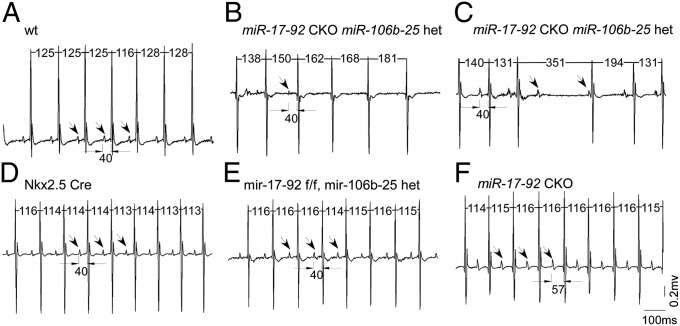Fig. 3.
Mice with miR-17-92 cardiac-specific knockout and miR-106b-25 haploinsufficiency have spontaneous arrhythmias. Continuous ambulatory ECGs were recorded in mice using telemetry. Arrows designate measured PR intervals. Continuous ambulatory ECGs indicated SAN dysfunction in a 6-wk-old Nxk2.5Cre; miR-17-92flox/flox; miR-106b-25null/+ (miR-17-92 CKO miR-106b-25 het) mouse (B) but not in WT mouse (A), Nxk2.5Cre (D) miR-17-92flox/flox; miR-106b-25null/+ (E), and Nxk2.5Cre; miR-17-92flox/flox (F). Although no episode of SAN dysfunction was detected, Nxk2.5Cre; miR-17-92flox/flox showed prolonged PR intervals. Four-month-old miR-17-92 CKO miR-106b-25 het mice had not only SAN dysfunction, but also type 2 second-degree atrioventricular block (an example shown in C). RR interval and PR interval measurements are labeled, and arrows designate P waves.

